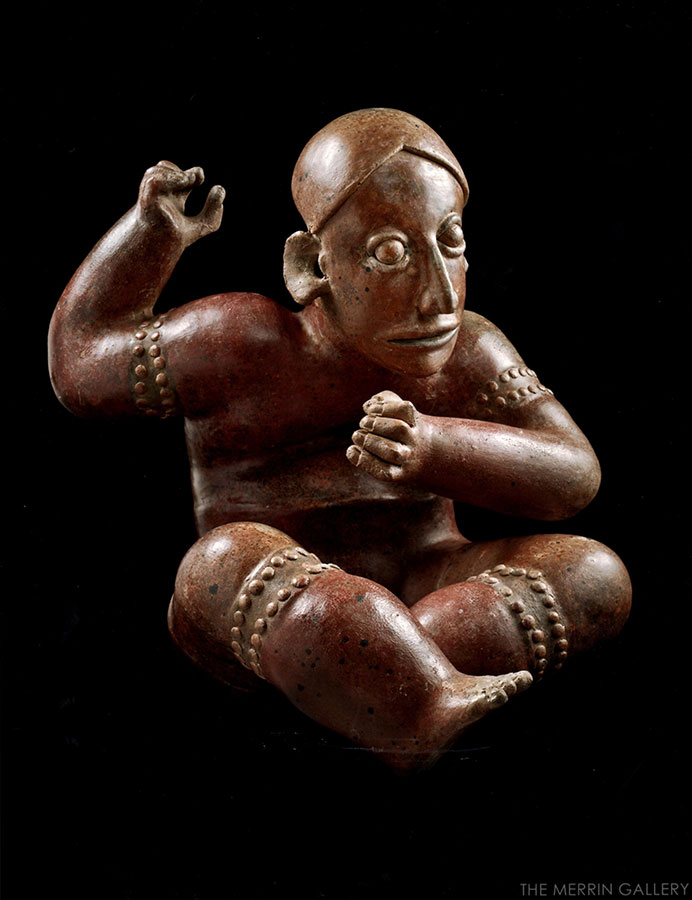Description
Much of the ceramic art from Mexico’s western coast remains intact today due to their inclusion in the shaft tomb burials used by the Jalisco, Nayarit, and Colima cultures. These shaft tombs were cut deep into volcanic tuff, between 3 and 20 meters (9.8 and 65.6 feet) deep, for the burial of the elite. The tradition began in west Mexico in 300 BCE, in the Proto-Classic period and, while the shaft tomb tradition’s formal end is indeterminate, it is thought to have ended between 300 and 500 CE. These shaft tombs often contained multiple burial chambers and were used by successive generations of families, with the oldest burials in those farthest from the shaft. Each burial was accompanied by its own accoutrement of burial items and figures. These works of art are unique in artistic style from region to region, and each culture imbued their ceramics with qualities that differed from their neighbors. This beautiful seated male figure may have been preserved in such a burial chamber.
The smoothly burnished figure sits with casual poise, leaning forward with the head and shoulders. His terracotta form has been carefully sculpted to be entirely hollow except for the fingers and the very ends of the feet. Vent holes subtly located in the figure’s ears allowed the hot air from the kiln to escape during its firing without harming the ceramic piece. The piece is very naturalistic and shaped without harsh angles or edges. Muscles and curves are worked in smoothly; even without emphasis it is clear to see that this man is physically powerful.
The legs are crossed, right leg resting over the left ankle. Studded bands decorate the upper arms and the figure’s calves below the knee, and he wears a single article of clothing in the form of a pair of short pants; cloth coming up to the waist and parting in the middle to cover each thigh. His hands, fingers so detailed that they include fingernails, are positioned to grip. The right arm is posed above the shoulder, the left bent in a protective position in front of the figure’s chest. Although the figure leans forward his face looks confidently ahead. His strong nose does not overtake the other features of the face and his lips are slightly pressed together, eyes round and open wide. His hair parts neatly to either side of his head from the middle of his forehead.
References:
Hasso von Winning, The Shaft Tomb Figures of West Mexico, Southwest Museum Papers Number 24; Los Angeles California (1974); p.125, fig. 121
MM




